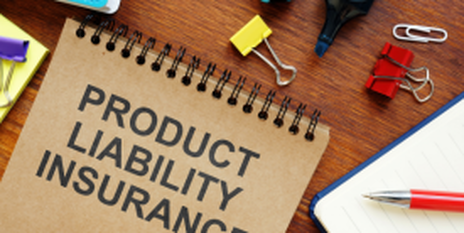|
In today's litigious society, businesses face a significant risk from product liability claims, which can lead to substantial financial losses, damage to reputation, and even business failure. Product liability refers to the legal responsibility of manufacturers, distributors, and retailers for any injuries or damages caused by their products. Managing this risk effectively is crucial for any business involved in the production or sale of goods. Understand Your Legal Obligations Before diving into risk management strategies, it's vital to understand the legal framework surrounding product liability in your jurisdiction. This knowledge will guide your risk management policies and procedures, ensuring they are aligned with regulatory requirements and best practices in your industry. 1. Conduct Rigorous Testing Test your products thoroughly before launching them to identify and rectify potential hazards. This includes stress testing, usability testing, and ensuring compliance with industry standards. Regular testing of batches post-production can also catch issues before they reach the consumer. 2. Implement Quality Control Measures Establish strict quality control processes throughout the manufacturing and distribution phases. This includes regular inspections, auditing suppliers, and ensuring that all materials and components meet your safety and quality standards. Documentation of these processes is essential for demonstrating diligence in case of legal scrutiny. 3. Provide Clear and Comprehensive Instructions Many product liability claims arise from misuse due to inadequate instructions or warnings. Ensure that your products come with clear, easy-to-understand instructions for use, maintenance, and warnings about potential risks. Consider language barriers and use universal symbols where applicable. 4. Stay Informed on Industry Standards and Regulations Regulations and standards can change, and staying updated is crucial for compliance and risk management. Participate in industry associations, attend relevant conferences, and subscribe to updates from regulatory bodies. Compliance with current standards can significantly mitigate liability risks. 5. Engage in Proactive Customer Communication Maintain open lines of communication with your customers. Provide avenues for feedback and address complaints swiftly. If a product issue arises, a proactive recall or advisory notice can prevent injuries and demonstrate your commitment to customer safety, potentially mitigating liability. 6. Secure Adequate Insurance Coverage Despite your best efforts, the risk of liability claims can never be entirely eliminated. Ensure that your business has adequate product liability insurance to protect against potential claims. Regularly review your coverage to ensure it matches the scale and nature of your operations. 7. Document Everything Maintain meticulous records of your product design, testing, manufacturing, quality control, and customer communications. Documentation can be invaluable in defending against a liability claim, demonstrating your commitment to safety and due diligence. 8. Train Your Employees Ensure that all employees, especially those involved in design, manufacturing, and customer service, are trained in risk management practices. Regular training sessions can help instill a culture of safety and responsibility throughout your organization. Product liability claims can pose a significant risk to businesses, but by implementing these risk management tips, you can reduce the likelihood of claims and protect your business. Prioritizing safety in product design, adhering to quality control measures, providing clear instructions, and maintaining comprehensive insurance coverage are all essential steps in a robust risk management strategy. By fostering a culture of safety and responsibility, businesses can not only minimize the risk of liability claims but also enhance their reputation and customer trust. Leave a Reply. |
Archives
June 2024
Categories
All
|


 RSS Feed
RSS Feed
3/12/2024
0 Comments